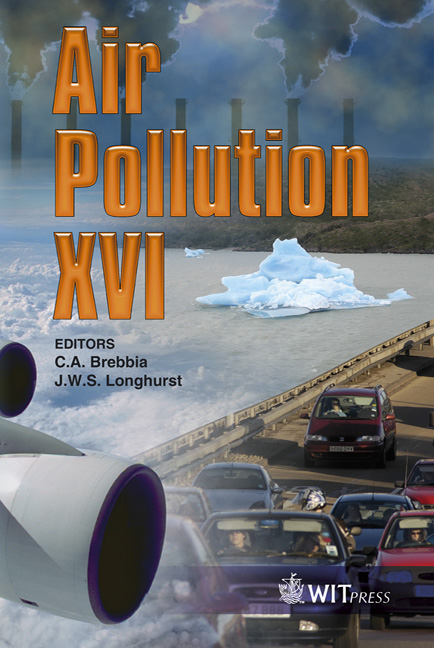Analytic Solutions Of The Diffusion-deposition Equation For Fluids Heavier Than Atmospheric Air
Price
Free (open access)
Transaction
Volume
116
Pages
8
Page Range
13 - 20
Published
2008
Size
377 kb
Paper DOI
10.2495/AIR080021
Copyright
WIT Press
Author(s)
F. P. Barrera, T. Brugarino, V. Piazza & L. Pignato
Abstract
A steady-state bi-dimensional turbulent diffusion equation was studied to find the concentration distribution of a pollutant near the ground. We have considered the air pollutant emitted from an elevated point source in the lower atmosphere in adiabatic conditions. The wind velocity and diffusion coefficient are given by power laws. We have found analytical solutions using or the Lie Group Analysis or the Method of Separation of Variables. The classical diffusion equation has been modified introducing the falling term with non-zero deposition velocity. Analytical solutions are essential to test numerical models for the great difficulty in validating with experiments. Keywords: atmospheric pollution, diffusion equation, exact solutions. 1 Introduction The classical form of the mean steady diffusion equation is valid for elementary particles of the fluid or when the foreign particles are of the same density as the fluid. If the density and dimensions are high enough to have terminal velocities vs not negligible, the distribution of the particles will be affected in various ways [1–4]. A simple approximation is to consider that the particle sinks at a rate vs and the ground acts as a permeable surface and retains all material passing through it. Using a very simple model it is possible to examine various cases. It is possible to have exact solutions of the mean steady diffusion when the turbulent diffusivity kz and the terminal velocity vd depend somehow on the height [5–7].
Keywords
atmospheric pollution, diffusion equation, exact solutions.





